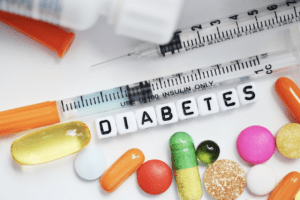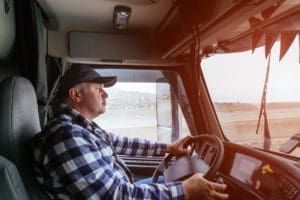TDI is Proud to Partner with Truckers Against Trafficking

Although it’s 2023, the traffic of human beings continues. Human trafficking is known as “modern slavery.” However, this term hasn’t been codified into international or state law. According to Homeland Security and the United Nations, human trafficking is when human beings are recruited, transported, transferred, harbored, and/or accepted through force, fraud, or deception with the explicit purpose of exploitative profit. Human trafficking includes all enforced actions: labor, services, debt bondage, peonage, and commercial sexual acts. Even now, Americans are forced against their will to perform unwilling acts.
Anyone can become a victim of this inhumane and inhuman treatment–from any age group, gender, sex, race, region, or nation. As a human rights violation, many nations have legislatures armed with protecting their citizens and preventing more from falling victim. Truck driving, especially as a leading transportation, is always on the lookout to prevent and protect those they can. After all, Truckers Against Trafficking are a vital tenet of the industry.
Human Trafficking in North America
While human trafficking affects people worldwide, it unfortunately also affects average Americans. The U.S. Department of State estimated that 14,000 to 17,000 Americans are trafficked into the United States each year. An estimated 27.6 million people were victims of human trafficking–but this number doesn’t include forced marriage. Including forced marriage–which doesn’t always infringe on international or state law–an estimated 49.6 million people fell victim. From 2010 to 2019 in the United States, the number of people referred to the U.S. Attorney’s office for criminal offenses of human trafficking rose 62%. Similarly, the number of these crimes prosecuted rose 82% between 2011 and 2020.
What are the Signs of a Human Trafficking Victim?
But how can truckers against trafficking identify what a human trafficking victim–and their trafficker–look and act like? Some red flags and identifiers are:
- If they are living with their employer,
- Their employer oversees or holds essential documents, like birth certificates, passports, etc.
- They’re paid little to nothing.
- If their words and conversations always sound scripted or rehearsed–as if someone has coached them with what to say,
- They’re always unavailable to speak alone,
- There are signs of physical abuse,
- They live in poor conditions
- Are fearful in most situations: when speaking one on one with people
It may be hard to tell at a glance or after multiple glances, so you can also ask some questions to gauge someone’s situation. If you can subtly ask questions, you can ask: Have you or your family been threatened? Can you leave your job when you want to? Do you live on your own? Has your identification or documentation been taken from you? Click here to learn more about the red flags to be aware of.
Anti-Human Trafficking Legislature
Before 2000, there weren’t any comprehensive anti-human trafficking laws in the United States. However, now there’s the Trafficking Victims Protection Act (TVPA)! The TVPA prevents and protects victims of human trafficking, including commercial sex acts, forced labor, involuntary servitude and slavery, violence against women, and more. It was passed in 2000, and the TVPA has been reauthorized and updated each year since its inaugural passing. One of the critical details requires that the National Human Trafficking Hotline number be publicly posted in every U.S. government building, airport, on aircraft, buses, bus stations, passenger trains and railroad stations, and all ports of entry–essentially, all places and modes of transportation. If it rides or transports, it has to have the Human Trafficking Hotline somewhere.
Which States Require Truck Drivers to be Trained to Identify and Stop Human Trafficking?
Moreover, the FMCSA has also decreed that drivers convicted of human trafficking are banned for life from operating commercial motor vehicles. The United States has national laws to prevent human trafficking, but individual states also have their own laws. Sadly, not all states have specific laws besides federal anti-human trafficking regulations. In any case, the states below have anti-trafficking legislation specifically for truck drivers with CDLs:
- Alabama
- Arkansas
- Colorado
- Illinois
- Kansas
- Maryland
- Ohio
- Oklahoma
- Texas
- Virginia
- Washington
At TDI, all of our students undergo Truckers Against Trafficking training regardless of their state.
How Can Truck Drivers Help Stop Human Trafficking?
Now that you know how to identify a human trafficking victim, know the laws of the land concerning human trafficking, and how many people fall victim to human trafficking each year, how can truckers against trafficking help stop human trafficking?
- As mentioned, keep your eyes and ears open for any signs of human trafficking victims.
- Ask questions! As previously said, if you can subtly ask questions, do! However, you don’t want to alert the human trafficker, so if you can’t ask questions–call the National Human Trafficking Hotline.
- Call for help. One of the easiest ways to help stop human trafficking in its tracks is by calling the authorities and reporting where you saw the victim, any descriptions of both the victim and trafficker, and any other details you can remember or think of. If you see someone you believe to be a victim of human trafficking, you should call the National Human Trafficking Hotline at 1-888-372-7888. You can also text INFO or HELP to BeFree (233733).
- However, if you see a crime happening at the moment–such as someone being sold for sex–you should immediately call 911.
- Another thing you can do is alert someone around you to what’s happening. Nearby store owners, business managers, and more are valuable witnesses and resources to ward against human trafficking.
Other Ways to Help
But how else can you help as a truck driver against trafficking? There’s always more you can do! Besides being aware of your surroundings, those around you, and the legislature of where you are, you should also try to get certified with any anti-human trafficking training and keep up with the news concerning human trafficking. Although it may seem simple, simply keeping apprised about what’s happening where you’re traveling and being prepared with training may help you in a future situation–and save someone’s life.
Are you Looking to Become One of the Truckers Against Trafficking?
If you want to make a difference, stop human trafficking, and become a truck driver, contact us today to get started with training for your CDL! We’ll make sure you’re the most qualified and well-prepared truck driver. If you are already a truck driver but want to get TAT trained, you can do so as an individual or a company.
Get Started
Get your Class A CDL in our friendly, supportive CDL training program. TRAIN with experienced instructors – multiple good-paying, secure job choices with benefits available for eligible graduates. EARN $700 – $1000+ / week to start as a truck driver. Get started today by filling out the form below. We look forward to hearing from you!



